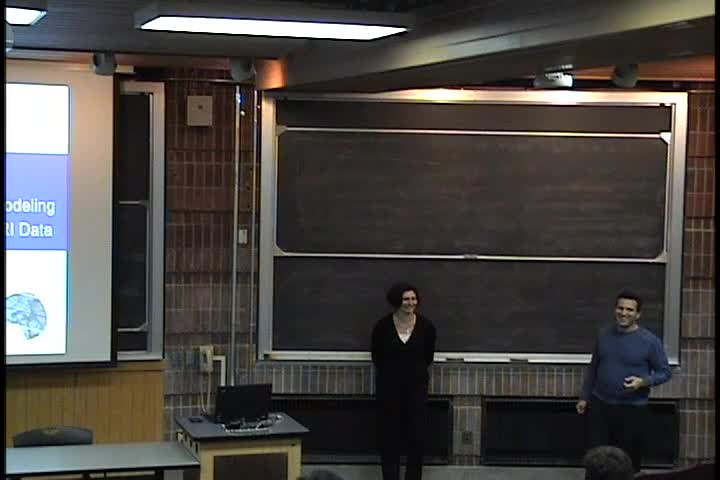Predictive Modeling of Mental States from fMRI Data
Presenter
October 29, 2010
Keywords:
- Multivariate
MSC:
- 62H86
Abstract
Traditional fMRI data analyses are mainly focused on discovering
brain activation patterns using standard GLM technique that selects voxels based on their individual correlations with stimuli.However, such mass-univariate approach completely ignores voxel interactions that are often essential for understanding brain functions,and can be better captured by an alternative approach - multivariate predictive modeling. This talk summarizes our recent work in this area, with a particular focus on discovering predictive features ("biomarkers") characterizing non-local, distributed patterns of brain activity.
One example of our approach is discovering predictive subsets of voxels via sparse regression methods such as LASSO and Elastic Net. We discuss several applications, such as predicting mental states of a subject playing a virtual-reality videogame in a fMRI scanner, or predicting subject's pain perception in response to a thermal pain stimuli. We find that sparse regression produces highly predictive models that also provide evidence for the distributed nature of neural function. Next, we underscore the importance of distributed activity patterns when exploring predictive information contained in the topology of brain's functional networks. We consider a challenging task of building a discriminative model for schizophrenia, a complex psychiatric disorder that appears to be delocalized, i.e. difficult to attribute to a dysfunction of some particular brain areas. Our findings demonstrate significant advantages the functional network features can provide over both traditional region-of-interest (ROI) approach and local, task-specific linear activations produced by standard GLM. Our results suggest that schizophrenia is indeed associated with disruption of global brain properties related to its functioning as a network, which cannot be explained just by alteration of local activation patterns. Moreover, further exploitation of voxel interactions by sparse Markov Random Field (MRF) classifiers allows to attain a high predictive accuracy of 86% over 50% baseline, which is quite remarkable given that our discriminative model is based on a single fMRI experiment using a simple auditory task.
